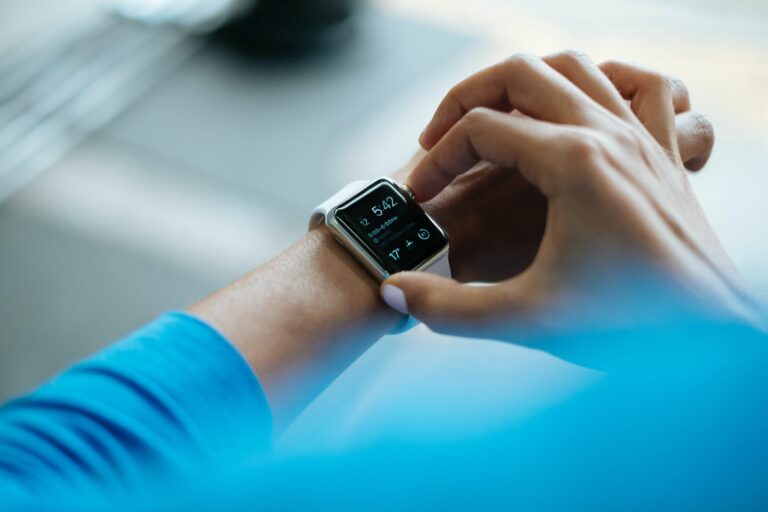It seems like every week there are new products being introduced that use the internet to connect to apps and websites to share data. That data is then used in all sorts of applications and to create new services. Every time one of these IoT devices ‘talks’ to an app or website on the internet constitutes a transaction. The number of those transactions is increasing exponentially. How can you create a smart invoicing for smart devices by bringing that kind of device transaction volume into one clear and orderly invoice? And who is paying the bill?
We crave connection
There is growing demand worldwide for connectivity within our devices (the ‘things’) to help them perform all sorts of services. That includes smart devices in the business environment as well as products for consumers. We use fitness trackers to follow our progress on runs. Our coffee makers tell us when they need cleaning. In factories, smart gas tanks signal when they need refills or replacement. In fields, orchards and vineyards, sensors monitor soil conditions and send that critical information to the crop owners. Every designer, maker, and supplier of IoT devices would be wise to figure out in advance how all that connectivity will be invoiced and to whom.
“Processing that much data demands more capacity than you can organise by just writing a quick script.”
More and more smart devices with mobile connections
IoT devices can be sorted into three categories of connectivity:
- The first is the so-called ‘hub connection.’ These are the sensors, switches, lamps, etc., that are connected to a local hub with the help of Wi-Fi, ZigBee or Z-Wave in homes and offices. These types of connection are already included in the internet provider’s services. Therefore their usage is not normally invoiced.
- A second category consists of devices that are connected to cloud services for data analysis, alarms, statistics tracking, etc. The usage here is also not normally invoiced. It is generally included in the subscription price of the cloud service.
- The third category of IoT is a different story. These are the physical objects that are directly connected to mobile internet. Improved access to the 5G network will make mobile connectivity available for many more of them. Better connectivity offers more options for the fitness devices and other trackers already available. However, it also presents possibilities for much bigger things like cars and trucks. This since much more data can be shared through mobile connections. Developments in pay-per-use and autonomous vehicles will have an enormous impact. Unless a supplier offers the connectivity as a service, those transactions will need to be invoiced to users. Probably either pay-per-use or subscription-based.

Enormous amounts of data
Using IoT devices nearly always generates massive amounts of data. Then all that raw data must be collected and organised into a proper invoice. Processing so many transactions and generating an invoice from them is no simple task. A specialised cloud service is a necessity.
Collecting transaction data in the cloud is already advisable simply because of the enormity. However, collecting the data is not the end of the story. Translating it to an invoice is complex and only get worse over time. Transactions must be linked to a price list before they can be invoiced and there may be different price lists for different customers. The longer the IoT service is offered, the greater the number of pricing strategies, discount campaigns and tiered rates that will be in use. Processing all of that without a specialised cloud service is nearly impossible.
And just imagine what will happen if your IoT thing hits the market with a bang and suddenly goes viral. Your service goes from thousands of users to millions of users in the blink of an eye! Managing the invoicing at that level will require much more capacity than what can be handled by writing a simple script yourself.
“A simple email with an attached invoice is no longer good enough.”
Know your customer
We always need to know exactly who the customer of an IoT device is. Is it a personal device, or is it used by more than one person? Is it always the same user, or is it used by visitors and passers-by? It is important that users are identified in a correct and secure manner. Especially if they can potentially reject the invoice. To reduce the credit risk you need to be able to prove who was the actual user of the IoT device. Moreover, there are also the GDPR regulations for privacy that must be observed.
There may also be business subscriptions by which a company can allow its employees to use the IoT device. Business customers tend to prefer bulk invoicing on a monthly, and sometimes annual, basis.
Specialised receivables administration
Once all the transactions have been translated into a customer invoice, that invoice will still need to be added into the accounts receivable. It’s highly recommended to have a specialised cloud service that can handle the entire dunning process, alongside your ERP system and invoicing software. It can provide the kind of reliable and up-to-date solution for the volumes and complexities that come with IoT receivables administration. The software is regularly updated to the latest functionality. Also, the organisation is free of the costs and headaches of an on-premises system. An ideal receivables cloud solution can quickly and easily be integrated with your organisation’s invoicing system. Or have an invoicing solution of its own available.
Other important functionality aspects IoT device suppliers should look for
- Processing transactions to invoices. Translating the enormous volume of transactions into simple and well-structured invoices that customers can understand.
- Digital invoicing and collection. A simple email with invoice attached is often no longer enough. Customers want to use convenient e-invoice services and automatic payments in their own country, including notifications to electronic post boxes.
- Transaction holding account. It’s sometimes desirable to collect and hold transactions in an account until a pre-defined billing level is reached. Until an invoice is generated, the system needs to be able to place the transactions in a temporary holding account.
- Averaging usage over billing periods. Customers may prefer to have the expected total cost spread out in equal monthly payments with an adjustment at the end of the year. This is especially useful for highly seasonal usage, such as energy bills.
- Flexible dunning settings. To avoid losses due to non-payment, it can be useful to block the use of an IoT device while an invoice is outstanding. Naturally, it is also important that the device can be made available again as soon as it is paid.
- White labelling and multi-tenant. Many IoT providers manage multiple products and even multiple brands. All these individual devices will need to be processed within the same system.
- Royalties and percentage fees. If the owner of an IoT device is someone other than the billing entity, there may be arrangements for them to receive a percentage of the usage revenues. The system should be able to handle current accounts for third parties, as well as the payment of royalties and fees through separate third-party holding accounts.
Conclusion
Because society has become more focussed on “life as a service” instead of consuming things and throwing them away, the role of IoT will only continue to grow. Our desire for measuring our own performance, and that of our cars, bicycles, coffee makers, and dishwashers, continues to grow as well. What will be possible in the coming years appears to be limited only by our imaginations. If we are to track and manage it all, we will need to not only collect the data but also translate into workable payment and collections solutions for businesses and individual consumers.
To all the IoT creators out there, we would like to say: By all means, keep inventing and developing new things, but don’t forget to think ahead about who will pay the bill and how – and let a specialist do the invoicing and accounts receivable work for you!
IoT is one of the trends in modern business financing that we discuss in our latest whitepaper. If you would like to know more about this and other trends, download the whitepaper ‘Trends & Tools in Modern Business Financing’
Want to know more about Aptic’s SaaS and cloud solutions for high-volume invoicing, receivables, factoring and other types of credit management? Feel free to get in touch with us: hello@aptic.net or contact me directly (see e-mail below)
